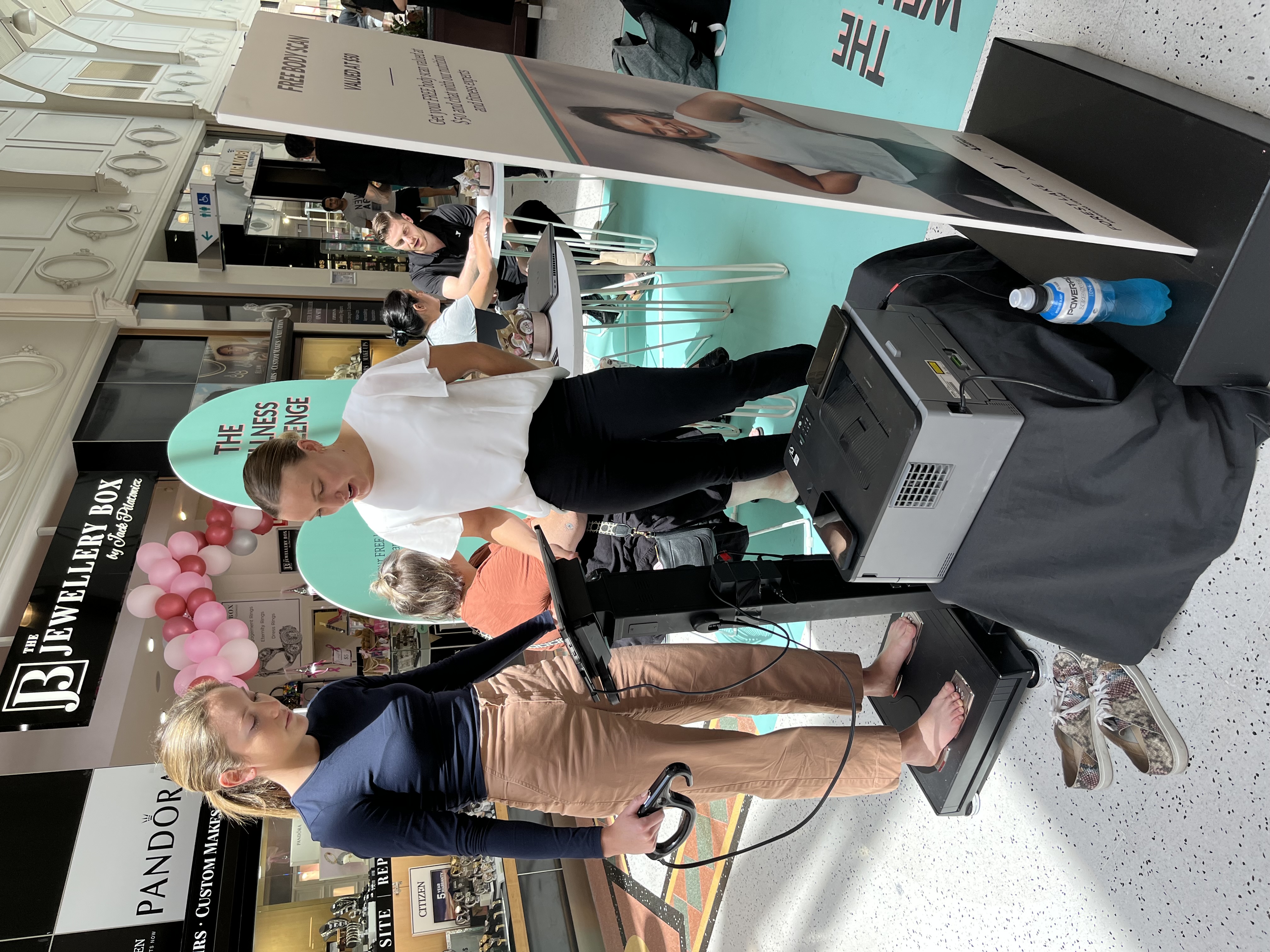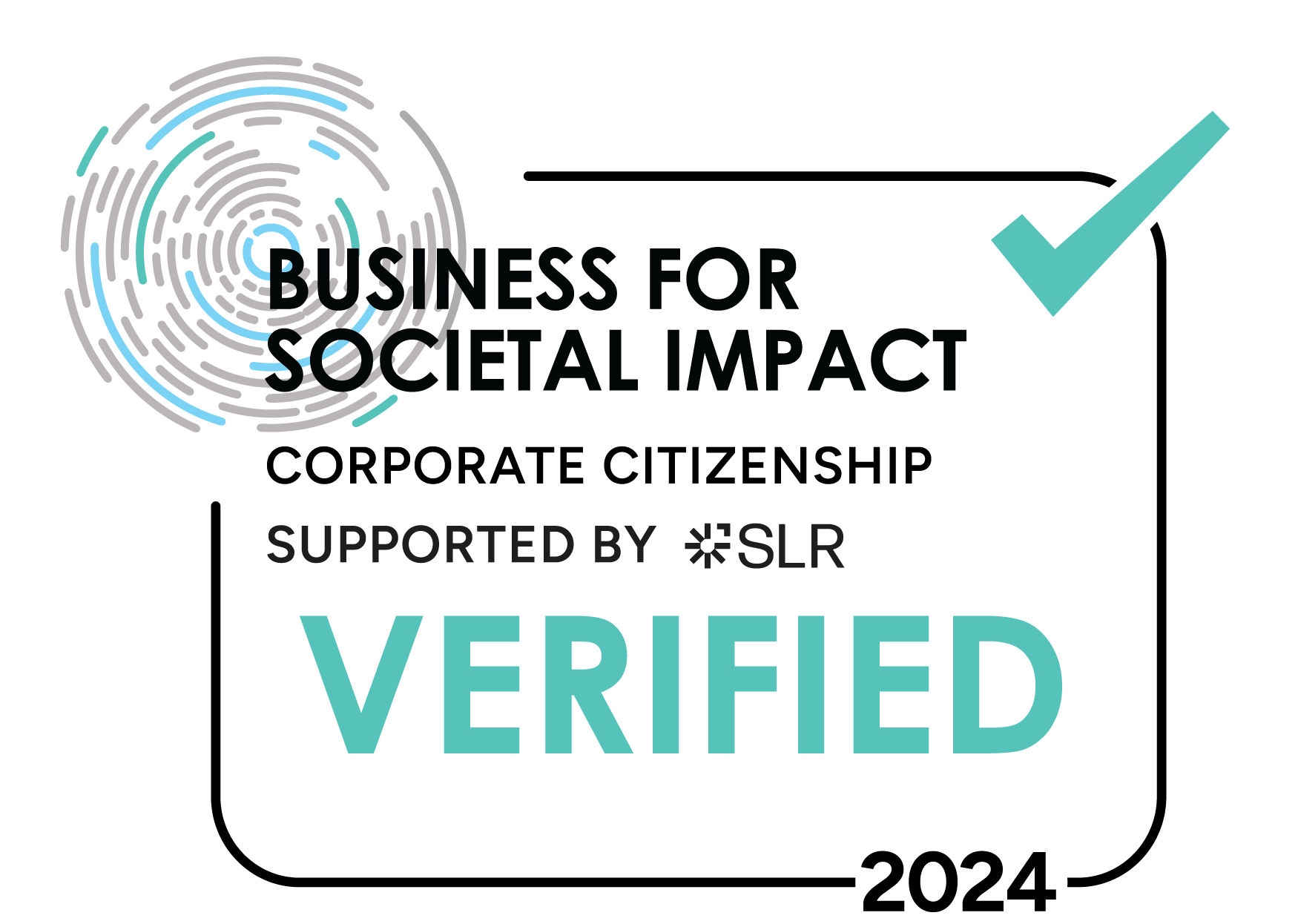
Our privilege as a real estate owner and manager is the role we play in serving our communities and delivering for our clients. We seek to play a meaningful role in our communities through our community investment programs and other asset-based initiatives.
Our Community Investment Program is focused on the flagship theme of physical health and wellbeing. This strategic focus area was chosen following extensive evidence-based research that identified it as the most materially relevant need across many of the communities in which our assets are located. The program is based on the idea that by introducing consumers to healthy eating practices and exercise through in-centre activations, we might educate and change behaviours, potentially reducing the likelihood of our community members developing longer term chronic illnesses.
This theme also responds to growing consumer trends and preferences, leveraging programs targeted at improving physical activity and diet to amplify customer experience and drive positive commercial results across our asset portfolio. Internal analysis completed in 2021 found that over a 10-year period, income across our portfolio from tenants with a balance towards healthy or health-related offerings has more than doubled.
In 2022, QIC partnered with McCrindle Research to measure the influence that QIC Real Estate’s consumer megatrends are having on purchasing decisions today, and the implications for the retail landscape into the future. The first deep dive in this series explored the ‘Self-Improvement and Wellbeing’ megatrend. A survey of more than 4,500 shoppers54 confirmed QIC’s observations that shopping centres play a vital role in the physical and mental wellbeing of local communities through the products and services they house, and the opportunities for social connection they provide. The research confirmed that QIC customers are more likely to prefer engaging in self-improvement and wellbeing activities at a QIC centre compared to at home, and this was much stronger than the panel of Australian respondents.
Figure 16: Exploring the self-improvement and wellbeing megatrend
These results reinforce our observations that physical wellbeing is an important priority for QIC shopping centre customers.
To deliver our Community Investment Program, we entered a joint partnership with Nutrition Australia and YMCA in early 2022. Nutrition Australia is Australia’s leading nutrition not-for-profit organisation, providing information, education and business-to-business consultation and advisory services to help those individuals achieve improved health through good nutrition. YMCA is the largest global youth movement with a shared purpose of empowering young people. In Australia, YMCA provides a wide range of programs and services to people of all ages, including activities focused on increasing physical activity.
54 Methodology – QIC Centres in-field 28 April 2022 to 16 May 2022; 2,423 completed across 9 QIC centres. Australians in-field 28 April 2022 to 3 May 2022; 2007 nationally representative sample. Source: QIC Real Estate – Knowledge, Insights and Research, October 2023.
Program delivery in FY24
Learnings from last year’s Community Investment Program delivery were incorporated into the design of the FY24 program, which has evolved into a six-week Wellness Challenge with the objective of driving deeper measurable impact for participants. We codesigned the bespoke Wellness Challenge with Nutrition Australia and YMCA, which was delivered as a free program that provided participants with a nutrition and exercise plan to support them in making long-term informed choices about their health and wellbeing. It was implemented by our community partners Nutrition Australia and YMCA at nine assets in FY24 (refer to Figure 17 for list of assets).
The Wellness Challenge commenced with an in-person Wellness Hub at our assets, where participants had a body composition scan followed by a dedicated 1:1 session with a personal trainer and nutritionist to develop a personalised plan for the challenge. Throughout the six weeks of the challenge, participants had free access to an innovative Wellness App to help keep them on track, as well as a range of resources and tailored live online sessions. At week six, another in-person Wellness Hub was delivered at each asset where participants had a follow-up body composition scan to understand their progress, and discuss next steps in a 1:1 session with a personal trainer and nutritionist. Community members not participating in the Wellness Challenge were accommodated through free walk-up body scans followed by a brief chat with a nutritionist and personal trainer to understand how they might improve their physical health. Free nutrition information sheets, recipes and food samples were also available to customers.
An additional three assets (refer to Figure 17 for list of assets) held a one-day in-centre Wellness Hub pop-up which offered community members an opportunity to engage via free body scans followed by a brief chat with a nutritionist and personal trainer to provide insights on how they could improve their physical health. Visitors to our assets also had access to free nutrition information sheets, recipes and food samples.
Our Community Investment Program was popular with the community and successful in delivering improved physical health outcomes for participants. During FY24, 183 people participated55 in the Wellness Challenge and an additional 497 community members had a body composition scan and brief session with a nutritionist and personal trainer as part of the Wellness Hub delivery across our asset portfolio56.
Several impacts57 were evident for participants in the Wellness Challenge. Overall, quantifiable improvements were seen in people’s physical wellbeing as a result of their participation. Data collected from the two body composition scans conducted at week one and week six of the Wellness Challenge provided insight into direct body changes over the course of the six-week program, with many participants having reductions across all four datapoints (bio age, body fat mass, BWI score, visceral fat level). The aggregate reduction in body fat mass58 was the largest measured change which indicated that 85% of the participants who completed the six-week Wellness Challenge experienced a reduction in body fat mass, demonstrating a measured change in participants' physical health during to the Wellness Challenge. Post-program survey data also revealed that the percentage of participants who responded to the survey who consumed at least three serves of vegetables per day increased dramatically from 19% before the Wellness Challenge to 88%59afterwards, suggesting a significant improvement in self-reported dietary habits across the participant group throughout the six-week program.
Overall, the Wellness Challenge received an overwhelmingly positive response, with community members’ survey reactions showing strong support for assets to deliver more physical wellbeing-related initiatives in the future.
55 Based on community members who signed up and attended week 1 of the Wellness Challenge.
56 QIC Real Estate uses the Business for Societal Impact (B4SI) framework to measure the value of our community investment activities across three areas – Inputs, Outputs and Impact. ‘Outputs’ under this framework relate to program aspects such as number of activities delivered and people reached. An accurate and evidence-based methodology to count community member engagement with all elements of the program offering was unable to be developed, therefore full participation figures were unable to be captured in the measurement of outcomes achieved from the program’s delivery.
57 QIC Real Estate uses the Business for Societal Impact (B4SI) framework to measure the value of our community investment activities across three areas – Inputs, Outputs and Impact. ‘Impacts’ under this framework relate to program aspects such as the changes that have occurred to individuals as a result of the program delivery.
58 Body fat mass is the weight of fat in the body (whereas body weight measures total body mass which includes bones, water, fat, muscles and organs). Reducing body fat has more significant benefits for health compared to reducing overall body weight helping to decrease the risk of several diseases.
59 The post challenge survey questions relating to the number of serves of vegetables consumed by participants pre and post challenge was only received across four of the assets that participated in the FY24 Community Investment Program.
 |
QIC Real Estate uses the Business for Societal Impact (B4SI) Framework60 to measure our community contributions. The B4SI Framework is a globally recognised best practice measurement standard that enables companies to understand the difference their contributions make to their business and society. FY24 is the fourth year we have used the B4SI Framework for our community investment reporting.
In FY24, we contributed approximately $1.93 million to our communities, through a mix of cash, time, in-kind contributions, and management-related efforts across the portfolio to deliver community related initiatives.61 This 21% increase from FY23 is due in part to ongoing improvements in our reporting processes.
60 QIC Real Estate is a member of B4SI and pays an annual fee.
61 Community contributions for FY24 have been verified by B4SI.
Figure 18: QIC Real Estate total community contributions FY21 to FY24
Contributions for the year were spread over several organisations, supporting a variety of local community focus areas at each asset. Community initiatives included the delivery of activations by Nutrition Australia and YMCA related to our portfolio-wide community investment program, provision of free spaces in our centres to community groups for fundraising activations, donations to local hospitals and schools, food drives, charity gift wrapping services, and gift card donations.
In FY24, the health category continued to be the largest contribution area across the portfolio, making up 30% of total cash, time and in-kind contributions. This aligns with the theme of our community investment program - physical health and wellbeing - which has been identified as the most materially relevant need across many of the communities in which our assets are located.
Figure 19: FY24 B4SI community focus areas62
62 ‘Other’ includes community fundraising, sporting clubs, etc.
QIC recognises the importance of building a better future for all Australians, which must pay respect to, and build trust with, Australia's First Nations peoples. We are committed to partnering with Aboriginal and Torres Strait Islander people, businesses, and communities to co-create meaningful investment outcomes and drive equal opportunities within our procurement, employment, and investment activities.
To support the delivery of QIC’s Innovate Reconciliation Action Plan (RAP), QIC Real Estate developed an Indigenous Delivery Plan for FY24, outlining the key areas of focus where our property assets and teams can make a real and positive difference towards achieving our broader RAP deliverables. Our FY24 Indigenous Delivery Plan covers the focus areas of QIC’s Innovate RAP, including community engagement and awareness, investment, procurement, employment, and governance and reporting. It also includes annual objectives specific to the real estate asset portfolio.
The plan is updated on an annual basis and acts as an important guide for centre teams in focusing their efforts on genuine initiatives that support reconciliation. Initiatives delivered during FY24 include:
- Continued to deepen connections with Traditional Owners and local First Nations groups on the lands of our assets, forming genuine, long-term relationships and positioning our shopping centres as places of welcome, cultural education and connection for the broader community.
- Procured over $1.1m of goods and services from First Nations businesses across the real estate business.
- Continued to support First Nations employment, including the ongoing engagement of our Indigenous school-based trainee at Grand Central (QLD).
- Appointed First Nations Community Champions in each of our centres. These are passionate advocates, driving meaningful First Nations activity in our centres, aligned with our Indigenous Delivery Plan.
- Incorporated QIC Real Estate’s Indigenous Design framework into the Real Estate Sustainable Design Brief. The Indigenous Design framework is a practical guide to build culturally responsive processes to ensure that First Nations design inputs are included in our development projects.
- Supported the Darwin Aboriginal Art Fair Foundation and Indigenous Fashion Projects through the National Indigenous Fashion Awards (NIFA) for the second consecutive year, reaffirming our commitment to recognising and celebrating excellence within the First Nations fashion industry. We sponsored two NIFA awards in 2023: the Community Collaboration Award (sponsored by Canberra Centre) and the Wearable Art Award (sponsored by Robina Town Centre). Further, QIC’s Local Talent Activation Program provided emerging Wiradjuri artist, Kristie Peters, a fully funded DAAF experience. Canberra Centre and Robina Town Centre hosted the 2023 NIFA Winners’ Showcase, displaying designs from the 2023 NIFA award winners and finalists to the community. Canberra Centre also hosted Kristie Peter’s fashion brand launch – BlakLabel Dreaming – via a sold-out runway event.
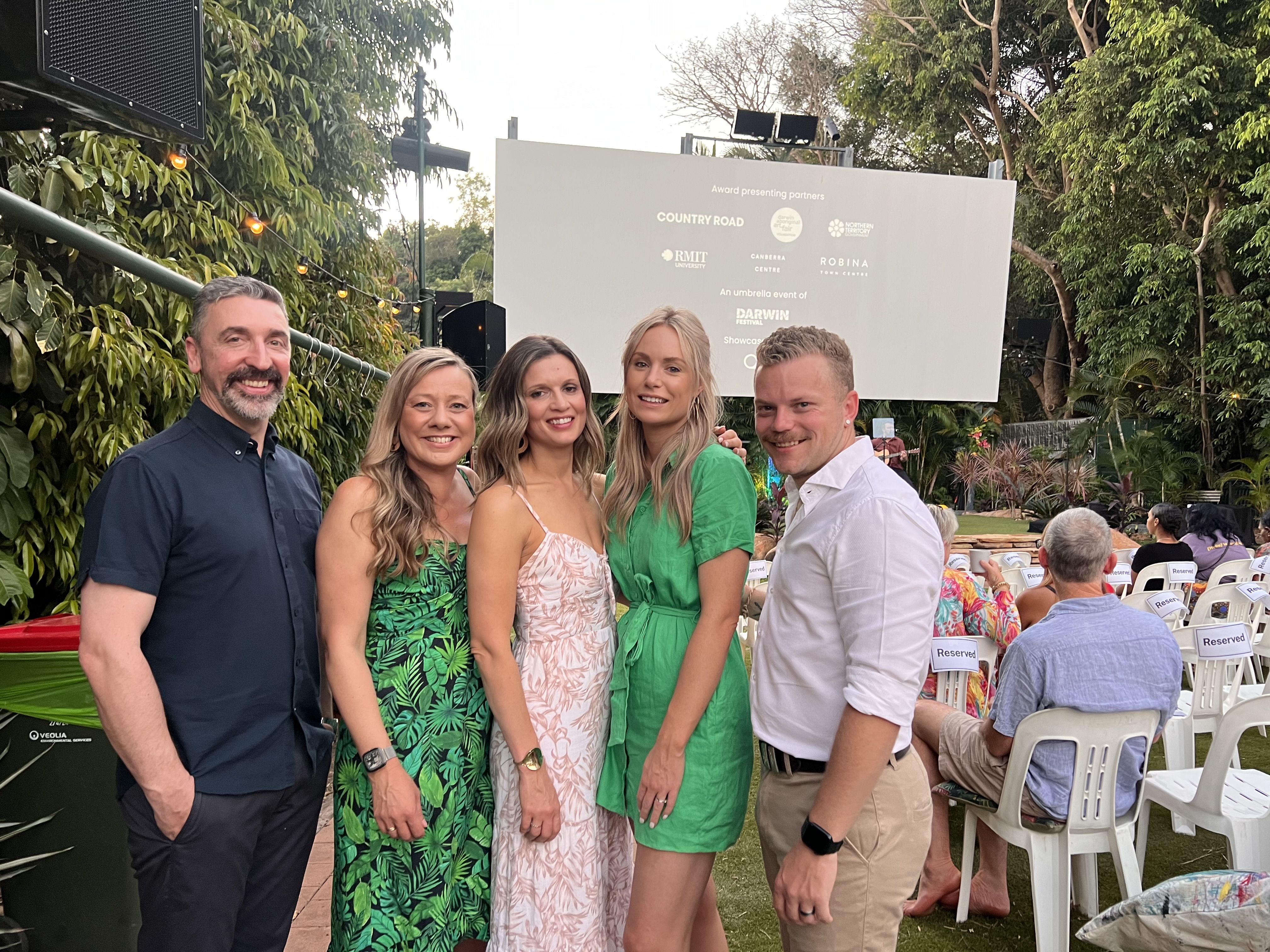 |
| Robina Town Centre 2023 NIFA Winners' Showcase |
- Recognised culturally significant days, including NAIDOC Week and National Reconciliation Week (NRW), across our shopping centres through a range of immersive experiences, recognising the history, culture and achievements of Aboriginal and Torres Strait Islander peoples.
- To celebrate NAIDOC Week, QIC collaborated with Cheryl Moggs OAM, a proud descendant of the Bigambul people of Goondiwindi, to create a polo shirt featuring Cheryl’s artwork, I am my Mother’s Teacher. The shirt features the symbols of community, people and place, and is proudly worn by our centre staff to show our assets as welcoming and inclusive places for the community.
- Our centres also collaborated with their local First Nations communities and Elders to tell the story of the 2023 NAIDOC Week theme, For Our Elders, with a full week of activations including Smoking Ceremonies, Welcome to Country, Indigenous dance performance and painting workshops
- Events were held across our assets to celebrate NRW, including Smoking Ceremonies, Welcome to Country, Aboriginal and Torres Strait Islander dance performances, First Nations weaving, art markets, paintings and a NRW panel discussion.
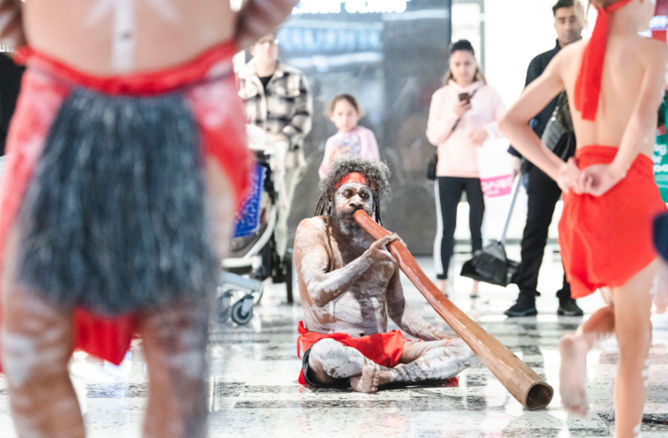 |
| Westpoint, NSW NAIDOC Week celebrations |
QIC Stretch RAP
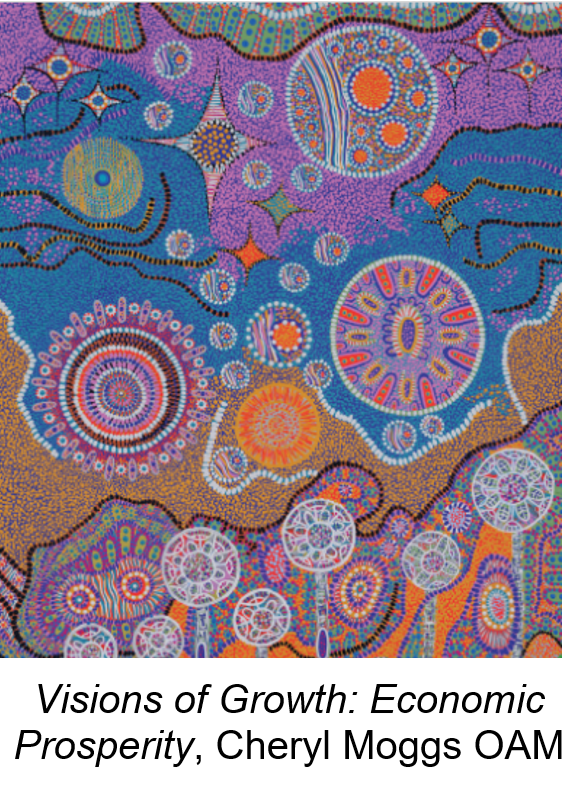
Since introducing our first Reflect RAP in October 2018 and our second Innovate RAP in October 2020, we have sought numerous opportunities to embed the reconciliation considerations across our organisation and drive awareness and inclusion initiatives into different parts of our business.
Our Stretch RAP builds on the progress we have made to date, heightening our ambitions and extending our sphere of influence, connecting with more people, businesses and communities as well as enriching our existing relationships. It focuses our efforts on the areas in which we believe we can deliver the most meaningful outcomes – including procurement, community engagement, employment and investment activities.
To progress the deliverables within our new Stretch RAP, QIC Real Estate will develop a new First Nations Delivery Plan for FY25, outlining the key areas where our property assets and teams can make a real and positive difference towards the delivery of our RAP.
As part of the launch of our Stretch RAP, we updated our Acknowledgement of Country to better reflect QIC’s position as a global organisation. Our new Acknowledgement of Country is consistent with the UN Declaration on the Rights of Indigenous Peoples, which recognises the need to respect First Nations peoples around the world.
 |
|
| Robina Town Centre NAIDOC Week display |
Recognising culturally significant days at our assets
Forest Lake Shopping Centre and Nerang Mall (QLD) partnered with Uncle Allan Lena, Traditional Owner and Custodian and Elder of the Bundjalung and Yuggara Nations to celebrate the 2023 NAIDOC Week theme, For Our Elders. Uncle Allan Lena shared a local dreamtime story through a community art collaboration with local schools and an early learning centre. Signage was installed incorporating a QR code for community members to read more on the dreamtime story.
Cheryl Moggs OAM joined the team at Grand Central (QLD) during NAIDOC Week 2023 for the launch of new polo shirts featuring Cheryl’s artwork, I am my Mother’s Teacher.
 |
| During National Reconciliation Week Kippa Ring Shopping Centre (QLD) unveiled a bespoke art piece curated and hand painted by Kabi Kabi artist Jason Douglas of Dalmarri named “kippa”. |
We place the utmost importance on making our community feel welcome in our centres and assets.
In FY24, we continued to roll out our three-year Diversity and Inclusion Plan, which outlines the ways our property assets and teams can bring QIC's broader diversity, equity and inclusion (DEI) strategy to life. The plan incorporates activities focused on gender equity, LGBTQ+, accessibility, cultural and linguistic diversity (CALD), First Nations people, young professionals, and community/wellness.
Key initiatives implemented across the real estate asset portfolio during the reporting period include:
- Launch of Real Estate Gender Plan 2023-2025, which documents our goals to increase female representation within all areas of Real Estate and promote targeted opportunities to help females succeed. Key achievements from our Gender Plan implementation during FY24 can be found in Our People.
- The continued implementation of the Welcome Here Project. QIC Real Estate is committed to promoting a safe, inclusive and welcoming environment for the LGBTQ+ community at all our centres. Welcome Here rainbow stickers are displayed on entry to let everyone know that LGBTQ+ diversity is welcomed and celebrated within our centres.
- At Christmas, deaf and hard of hearing children had the opportunity to visit an Auslan-fluent Santa for the first time at many of our centres. During their Santa visit, children were greeted by a sign language-fluent Santa, allowing them to effectively communicate their Christmas list. Sensitive Santa, an experience designed for children with sensory processing challenges, has been offered at many of our centres for several years, and the introduction of Auslan Santa means the experience is now more inclusive and accessible for our customers.
- Grand Central (QLD) implemented a desktop hearing loop at the centre’s customer service desk in FY24. The ‘Smartloop’ hearing device enables those with hearing aids or cochlear implants to connect via Telecoil (T-Coil) technology, which reduces background noise and enhances speech clarity of customer service staff through a small microphone. Grand Central worked with Better Hearing Australia, the peak body for Queenslanders with hearing loss, to implement this initiative at the centre.
- Our centres celebrated several days of significance on the diversity and inclusion calendar, including International Women’s Day, Wear It Purple Day, IDAHOBIT, NAIDOC Week, National Reconciliation Week, Diwali, Lunar New Year, Ramadan and Eid al-Fitr, Harmony Week, and many others.
 |
 |
| Diwali celebrations at Epping (VIC) | Lunar New Year celebrations at Forest Lake (QLD) |
A groundbreaking initiative for community safety, wellbeing and security breaches in our retail assets
Project Safe-Guard was established by QIC Real Estate in FY22 to address a surge in critical incidents involving self-harm attempts during the pandemic.
The initiative strategically and proactively uses CCTV to provide early alerts of high-risk situations, with the aim of preventing them from turning into potentially critical incidents. Leveraging state-of-the-art motion alert technology, a first in the shopping centre industry, the initiative significantly improves our ability to respond swiftly and prevent potential incidents at our centres. When an alert is triggered, images from the alerted camera immediately appear on security guard-monitored screens in the control room, along with flashing red LED lighting and an alarm, to ensure alerts are not missed.
Since its deployment, Project Safe-Guard has been implemented at high-risk areas within nine centres across our portfolio and has successfully enabled intervention before incidents occur on many occasions. We are continuously striving to further enhance the program. In FY24, we collaborated with the provider of the cameras used in Project Safe-Guard, Axis Communications, to undertake further testing for the next firmware update. This enabled the firmware’s finalisation for global roll out and significantly advanced the system’s functionality.
Thanks to our leadership in this area, we were invited to share the Project Safe-Guard strategy and operational elements with several property peers, Woollahra Council NSW and Black Dog, with the aim of sharing our knowledge to support more people in the community.
Understanding the needs, priorities, and interests of our stakeholders is central to everything we do. We undertake comprehensive stakeholder mapping and planning activities to ensure we develop and maintain sustainable relationships throughout the lifecycle of our assets.
Table 13 outlines the ways in which we engage with our major stakeholders.
Table 13: QIC Real Estate stakeholders
| Stakeholder group | How we engage | Key focus areas |
| Customers and local communities |
|
|
| Retailers |
|
|
| Employees |
|
|
| Investors |
|
|
| Government |
|
|
| Industry groups |
|
|
| Media |
|
|
| Suppliers |
|
|
| Traditional Custodians and First Nations people |
|
|

